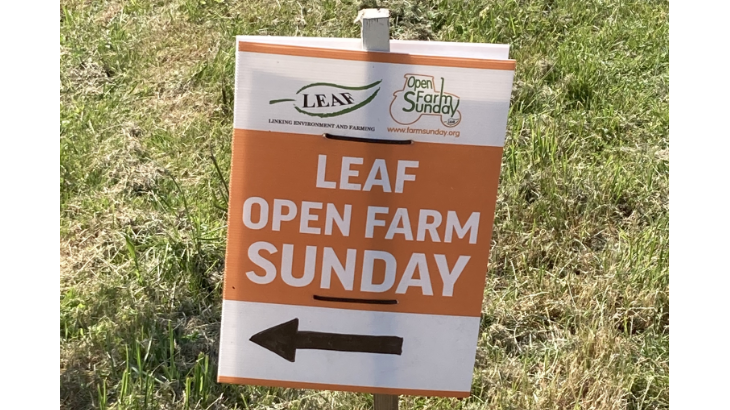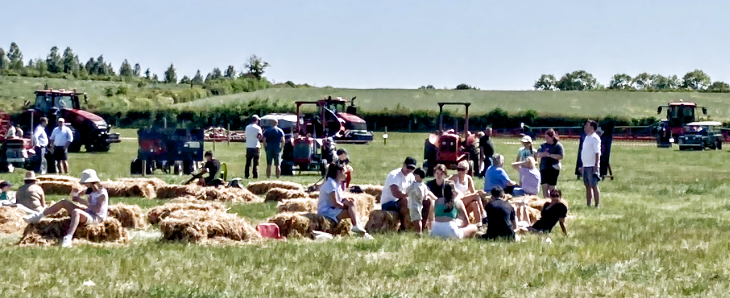GBGW 2023: The Great Food Challenge
Great Big Green Week 2023: Food & Farming

Our food contributes significantly to the carbon emissions causing the climate to change. How can we rise to the challenge of feeding the number of people on Earth in a way that is healthy, safe, affordable and has minimal environmental impact?
As a consumer making choices to fit with our lifestyle and our pocket as well as our principles is difficult - we are faced with a huge choice of products and often very limited information about how food is produced and its environmental impact.
One way to get a small insight into UK food production is to visit a working farm, and that is what I did last weekend as part of LEAF Open Farm Sunday. You can read more about the scheme here - enter your postcode to find a participating farm local to you. I’d encourage you to pay one a visit if you can.

I visited H Collins & Son in Kislingbury, a few miles SW of Northampton. The array of farm machinery on display was vast in every sense, with helpful signs explaining what each one is for. Reading what these can do in a day makes it clear why new technology improves efficiency. Farm machinery demos were watched by lots of families with fascinated small children, who also loved getting close to sheep and lambs. There were games and a straw bale racetrack for young ones to enjoy.

I liked the sheep too, but the highlight for me was a long chat with John, the nutritionist from Heygates, based in Bugbrooke Mill one village away from Kislingbury. Heygates produce a wide range of flours, mixes and animal feeds. I particularly wanted to find out more about soy in animal food, as growing soybeans is a major cause of deforestation, especially in South America.
The raw material used in animal feed is actually soy meal, effectively a by-product of soya oil manufacture. Soy meal is high in protein (about 40%), which makes it highly suitable as a foodstuff, but also makes it difficult to replace, as there is no readily available product yet which matches this at a similar cost. A number of alternatives are being explored, so in the future it should be possible to replace soy meal in animal feeds largely or even entirely. The company Heygates get their soy from (Cargill) is signed up to the UK Roundtable on Sustainable Soya, a relatively new initiative. This means that soy bought by Heygates should not have been grown on newly deforested land. Consumer pressure is a key driver behind the desire to cut down on use of soy.
One way to reduce the total amount of soy being used to feed animals is for all of us to eat less meat. The average consumed daily per person in the UK is around 219g, compared to 12g in India and an average of 45g across Africa. Meat-free food is becoming more mainstream and more appealing – see Alexina Cassidy’s piece on Eat Curious.
We could also look at different sorts of meat. Whilst at the farm I enjoyed a venison burger, made by a company that provides a service to landowners affected by too many deer. In the absence of natural predators to control numbers, deer damage crops and commercial and natural woodland, with knock-on effects on other wildlife. Some argue that fencing could be more effectively used to control deer, but some culling is unavoidable.
In food as everything else, we should aim to be thoughtful consumers and finding out a bit more about the process of growing and producing what we eat can only be a good thing.
